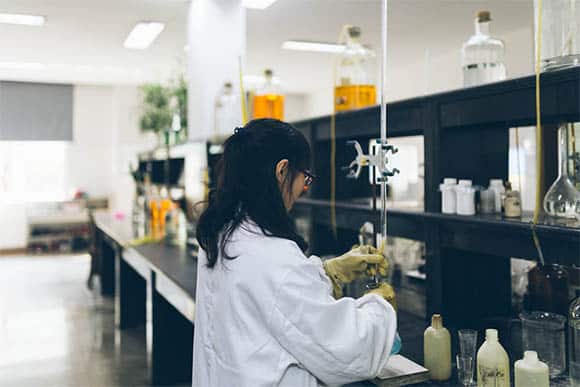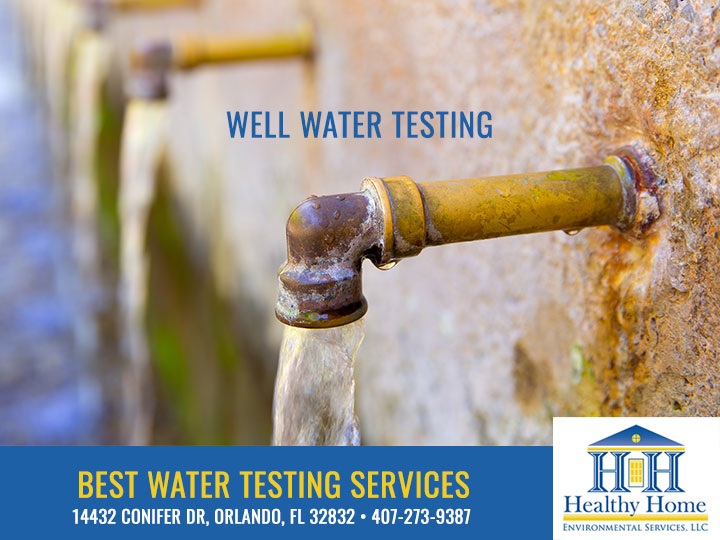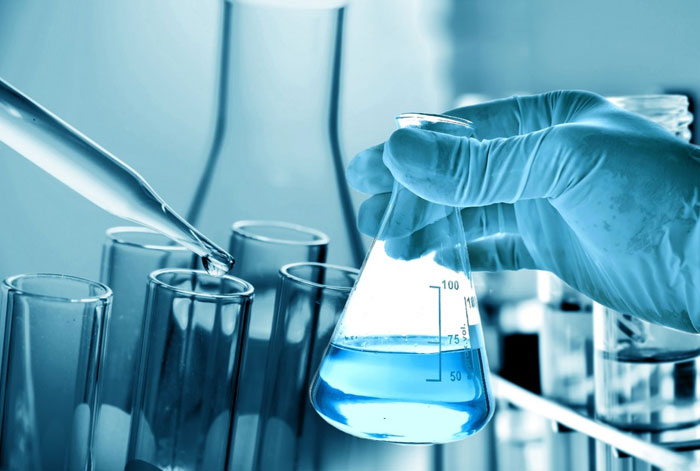Discover What Is Included in Water Testing and Exactly How It Ensures Safe Drinking Water
Recognizing the complexities of water screening is critical in guaranteeing the top quality and safety of our alcohol consumption water. Via a careful examination of physical, chemical, and microbiological elements, water testing recognizes possible contaminants that can pose health and wellness threats. From the presence of hefty steels to hazardous microbes, each test part plays a critical role in maintaining the stability of our water supply. Advanced techniques like chromatography and spectrometry boost the precision of these analyses. Yet, exactly how do these processes translate right into the regulative frameworks that assure safety in our day-to-day usage?
Secret Elements of Water Screening
Water screening is a crucial process that involves several vital components to make sure the safety and security and high quality of alcohol consumption water. Furthermore, guaranteeing the pH equilibrium of water is important, as it affects the water's corrosiveness and the efficacy of disinfection processes.
An additional considerable part involves microbiological analysis, where water samples are analyzed for the presence of microorganisms such as germs, infections, and protozoa. If consumed, this analysis is important to identify organic threats that could position wellness dangers. Additionally, chemical analyses are performed to spot natural and inorganic materials, such as hefty steels, nitrates, and chemicals, that could be present in the supply of water.
.jpg?h=391&la=en&mw=600&w=600&hash=DD45DF21055C9E6A15F3BF08915E96C8)
Detecting Dangerous Contaminants
Identifying unsafe impurities in alcohol consumption water is a fundamental element of securing public health. This process involves determining possible dangers that can jeopardize the quality and security of water supplies. Contaminants can vary from bacteria such as bacteria, viruses, and protozoa, to inorganic substances like lead, arsenic, and nitrates, as well as natural contaminants consisting of chemicals and commercial chemicals. Each type of contaminant presents distinct wellness threats, making their discovery essential to make sure the water taken in by the public is safe.
Water testing for contaminants is typically conducted by regulative firms and water utilities, utilizing a mix of area tasting and research laboratory evaluation. These evaluations are designed to spot both naturally happening substances and anthropogenic toxins that might have gotten in the water supply via farming runoff, commercial discharge, or maturing infrastructure. Routine surveillance is necessary, as contamination degrees can vary as a result of environmental changes, seasonal variants, or human activities.
The recognition of unsafe pollutants educates needed activities, such as water treatment interventions or public advisories, to alleviate threats. Early detection is important to protect against adverse health effects, ranging from gastrointestinal illnesses to lasting problems like cancer cells, thereby guaranteeing the proceeded safety and security of alcohol consumption water.

Chemical Analysis Strategies
In the world of guaranteeing risk-free alcohol consumption water, chemical evaluation strategies play an essential duty in determining and quantifying pollutants. These approaches are crucial for discovering a broad variety of chemical substances, consisting of hefty steels, pesticides, and commercial toxins, which can posture considerable health and wellness threats. Strategies such as atomic absorption spectroscopy (AAS) and inductively paired plasma mass spectrometry (ICP-MS) are generally utilized to gauge trace levels of metals like lead, mercury, and arsenic. These instruments give specific metrology, helping with compliance with regulative criteria.
Gas chromatography-mass spectrometry (GC-MS) is another critical method, especially for natural substances. It divides complex combinations and recognizes semi-volatile and unpredictable organic compounds, guaranteeing that pollutants like benzene and toluene are within risk-free limits. High-performance liquid chromatography (HPLC) is in a similar way used for non-volatile compounds, including particular pesticides and pharmaceuticals.
Ion chromatography is used to identify focus of anions and cations, such as nitrates and sulfates, which are pivotal in analyzing water quality. These chemical evaluation strategies collectively make certain that drinking water stays safe by finding deviations from established pureness norms, therefore safeguarding public health. Making certain accuracy and accuracy in these tests is critical to keeping the stability of water security evaluations.
Microbiological Examining Techniques
Accurate microbiological screening is crucial for guarding public wellness by making sure that drinking water is complimentary from dangerous pathogens. This procedure involves detecting and enumerating microorganisms such as bacteria, viruses, and protozoa that might pollute water products. Common microorganisms consist of Escherichia coli, Giardia, and Cryptosporidium, each positioning significant wellness threats.
Numerous approaches are employed in microbiological screening to determine these risks. The membrane filtering technique is often utilized, entailing water passing through a filter that catches microorganisms, which are after that cultured to determine their existence and concentration. Conversely, the multiple-tube fermentation approach enables the quantification of coliform germs making use of a collection of dilution and incubation steps.
Improvements in technology have presented molecular methods such as polymerase chain reaction (PCR), which allows for the extremely particular and fast detection of pathogens by enhancing their hereditary product. Enzyme-linked immunosorbent assays (ELISA) likewise use a method to spot microorganisms by recognizing particular proteins or antigens.
These varied methods are essential for detailed water high quality assessment, ensuring that water treatment procedures are reliable and that circulation systems maintain safety. By employing these microbiological helpful site screening approaches, prospective health risks can be recognized and reduced quickly.

Importance for Public Health
Making certain the microbiological safety and security of alcohol consumption water directly impacts public wellness by protecting against the spread of waterborne illness. Virus such as germs, infections, and protozoa can result in diseases like cholera, dysentery, and intestinal infections (Well water testing services). The application of extensive water screening procedures is vital in identifying and reducing these risks, therefore safeguarding neighborhoods from possible episodes
Routine water testing not only detects microbial pollutants yet likewise evaluates chemical and physical parameters that might influence health. Too much degrees of nitrates or heavy steels such as lead can pose serious health and wellness dangers, especially to susceptible populaces like infants and expectant ladies. By recognizing these dangers early, water testing makes it possible for timely treatments, ensuring the water remains within safe usage requirements.
Furthermore, water testing plays an important role in preserving public self-confidence in local water systems. It offers openness and accountability, reassuring the public that their health is a concern. For policy manufacturers and health and wellness authorities, the data originated from water testing informs decisions on facilities financial investments and public health and wellness approaches, making certain resources are routed where they are most required. By doing this, water testing is important in promoting a healthier, more secure society.
Verdict
Water testing functions as a crucial mechanism for making sure the safety and top quality of drinking water with comprehensive examination of its physical, chemical, and microbiological buildings. By spotting dangerous pollutants, such as hefty metals and chemicals, and making use of sophisticated techniques like chromatography and spectrometry, water testing facilitates the recognition of potential health dangers. The execution of extensive testing protocols is essential for preserving compliance with safety requirements, inevitably safeguarding public health and wellness and strengthening confidence in community water supply.

By recognizing these dangers early, water testing enables prompt treatments, making sure the water get redirected here supply stays within safe consumption requirements.
Water screening serves as an important device for guaranteeing the security and top quality of drinking water via comprehensive evaluation of its physical, chemical, and microbiological residential properties.